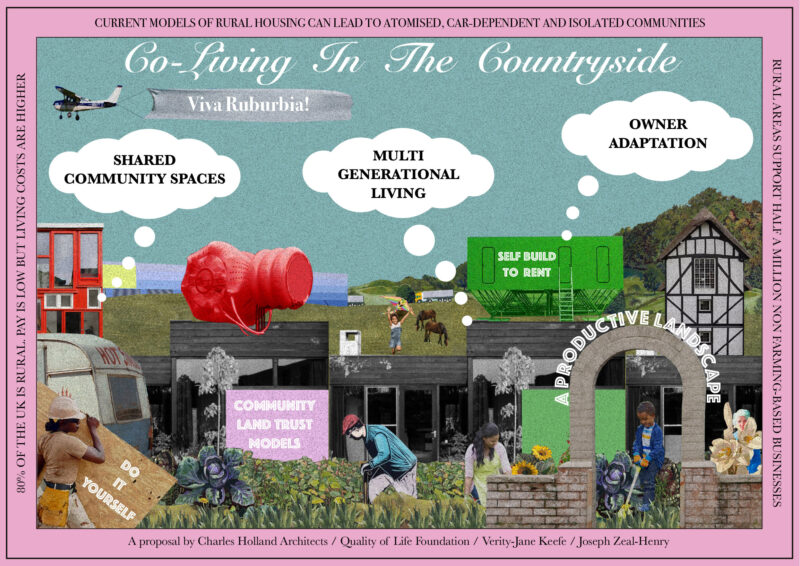
Co-Living in the Countryside
Charles Holland Architects with Quality of Life Foundation, Verity-Jane Keefe, Joseph Zeal-Henry
Rural areas in the UK suffer from a shortage of affordable housing and are overly reliant on a narrow but ubiquitous development model – often leading to atomised communities of single-family units in car-dependent cul-de-sacs.
Co-Living in the Countryside proposes instead a new type of shared, communal housing to re-invigorate rural communities and attract new and more diverse residents. Addressing community, character, governance, affordability, sustainability, employment, health and wellbeing, the design focuses on solutions for a typical site for new housing within the South Downs National Park. In a new model of co-operatively managed and owned co-housing, individual units are connected by shared facilities such as kitchens, dining rooms, offices, studios and gardens.
The idea is that residents share space, resources and household tasks including gardening and childcare, with shared space and facilities for visiting friends, extended family members and social and community use. The design aims to reduce the need for car ownership and the stress and loneliness of commuting by providing shared working spaces and transport.
A new approach to architectural language encourages owner-adaptation, customisation and personal choice as part of the design process. Takings its cue from experimental rural housing such as the plotlands and other self-build communities, the aim is to establish a new, dynamic model of co-living in the countryside.
Charles Holland Architects
Charles Holland, Architect
Quality of Life Foundation
Matthew Morgan, Housing Research
Tiffany Lam, Housing Research
Verity-Jane Keefe, Visual Artist
Sound Advice
Joseph Zeal-Henry, Urbanist and Designer